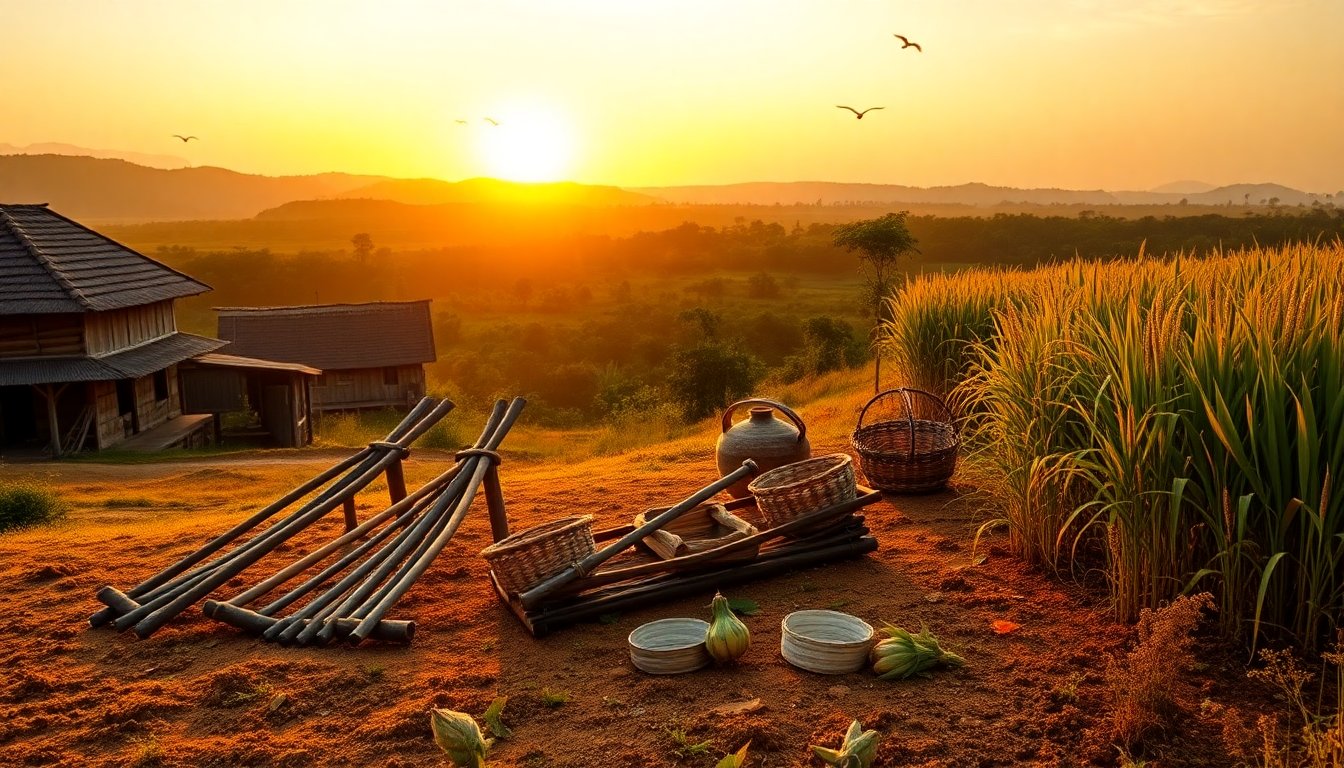Table of Contents
Rithy Panh, recognized as one of Cambodia’s foremost filmmakers, has made notable contributions to documentary cinema. His experiences as a survivor of the Khmer Rouge era significantly inform his work, which often reflects on the aftermath of genocide in Cambodia.
After refining his skills in France, Panh returned to his homeland in the late 1980s to explore the complexities of his people’s history through film. His acclaimed works, such as ‘The Missing Picture’, utilize various techniques, including claymation and archival footage, to convey the struggles faced by his compatriots.
In his latest release, ‘We Are the Fruits of the Forest’, Panh adopts a more subtle storytelling approach, focusing on the Bunong people, a traditional indigenous group residing in the highlands of northeastern Cambodia. The film captures the essence of their cultural practices while illustrating the pressures exerted by modernity and external economic interests.
The Bunong people’s heritage
The film opens with an evocative drone shot over lush forests, setting the stage for Panh’s exploration of the Bunong community. Utilizing a distinctive split-screen format, he presents silent black-and-white archival footage alongside contemporary visuals.
This duality highlights the contrast between the past and present, as well as the cultural richness of the Bunong people.
Traditionally, the Bunong have cultivated large-grain rice in their mountainous environment, adhering to ancestral rituals as they clear forested areas for agriculture.
However, recent pressures from modern capitalism have forced them to adapt. Companies are increasingly encroaching on their lands, compelling the Bunong to accelerate their harvesting practices and diversify their crops to include cassava, rubber, and honey.
Challenges of modernity
Panh’s documentary captures the daily lives of the Bunong, focusing primarily on a single village.
The film illustrates their laborious routines as they strive to maintain their cultural identity amidst external pressures. While there are moments of levity, such as children watching an action film on a cellphone, the overall tone remains somber, reflecting the community’s precarious existence.
In addition to visual storytelling, Panh employs a voiceover that appears to originate from a single male narrator, representing the collective voice of the Bunong people. This narration contextualizes the imagery, articulating their customs, beliefs, and the harsh realities they face. It sheds light on the classifications of forests they rely on and highlights the burden of predatory bank loans that have emerged as their agricultural yields dwindle. The narrator’s reflections also touch upon the racism they endure from broader Cambodian society.
Reflections on cultural identity
While the voiceover provides valuable insights, the approach can lead to a sense of repetition, as recurring themes play throughout the film. Nonetheless, Panh’s elegance in rhythm and composition keeps the audience engaged. Notably, this film marks a departure from his previous works, as it does not reference the Khmer Rouge, yet it poignantly illustrates the erosion of Bunong customs under modern economic forces.
The integration of archival footage serves a poetic function, offering fleeting glimpses into the lives of Bunong ancestors. Panh often juxtaposes the same image in both past and present frames, fostering a sense of duality that invites viewers to contemplate the transitions experienced by this community over time. A recurring image of a topless Bunong woman emerges throughout the film, evoking interpretations of either a spiritual connection to the forest or a potential omen of misfortune, symbolizing the delicate balance between their cultural heritage and encroaching modernity.
Ultimately, ‘We Are the Fruits of the Forest’ presents a compelling narrative that underscores the Bunong people’s struggle to maintain their identity while navigating the challenges posed by a rapidly changing world. Through Panh’s lens, viewers are invited to reflect on the importance of preserving cultural traditions amid relentless modernization.





